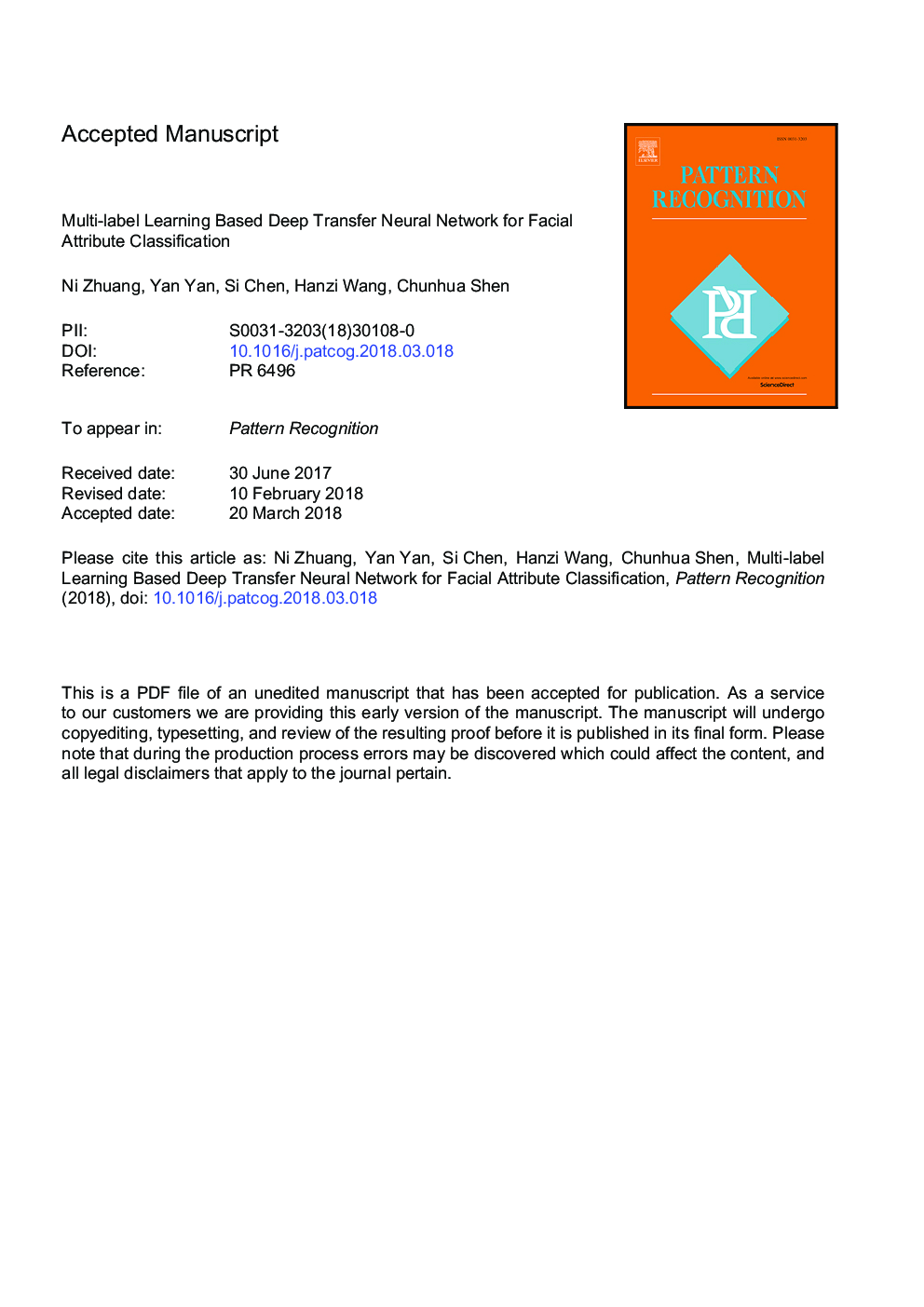| کد مقاله | کد نشریه | سال انتشار | مقاله انگلیسی | نسخه تمام متن |
|---|---|---|---|---|
| 6938921 | 1449967 | 2018 | 44 صفحه PDF | دانلود رایگان |
عنوان انگلیسی مقاله ISI
Multi-label learning based deep transfer neural network for facial attribute classification
ترجمه فارسی عنوان
شبکه چند عاملی مبتنی بر یادگیری مبتنی بر چند عاملی برای طبقه بندی ویژگی های صورت
دانلود مقاله + سفارش ترجمه
دانلود مقاله ISI انگلیسی
رایگان برای ایرانیان
کلمات کلیدی
انتقال یادگیری، طبقه بندی ویژگی های صورت، یادگیری چند برچسب، یادگیری عمیق، شبکه های عصبی انعقادی،
موضوعات مرتبط
مهندسی و علوم پایه
مهندسی کامپیوتر
چشم انداز کامپیوتر و تشخیص الگو
چکیده انگلیسی
Deep Neural Network (DNN) has recently achieved outstanding performance in a variety of computer vision tasks, including facial attribute classification. The great success of classifying facial attributes with DNN often relies on a massive amount of labelled data. However, in real-world applications, labelled data are only provided for some commonly used attributes (such as age, gender); whereas, unlabelled data are available for other attributes (such as attraction, hairline). To address the above problem, we propose a novel deep transfer neural network method based on multi-label learning for facial attribute classification, termed FMTNet, which consists of three sub-networks: the Face detection Network (FNet), the Multi-label learning Network (MNet) and the Transfer learning Network (TNet). Firstly, based on the Faster Region-based Convolutional Neural Network (Faster R-CNN), FNet is fine-tuned for face detection. Then, MNet is fine-tuned by FNet to predict multiple attributes with labelled data, where an effective loss weight scheme is developed to explicitly exploit the correlation between facial attributes based on attribute grouping. Finally, based on MNet, TNet is trained by taking advantage of unsupervised domain adaptation for unlabelled facial attribute classification. The three sub-networks are tightly coupled to perform effective facial attribute classification. A distinguishing characteristic of the proposed FMTNet method is that the three sub-networks (FNet, MNet and TNet) are constructed in a similar network structure. Extensive experimental results on challenging face datasets demonstrate the effectiveness of our proposed method compared with several state-of-the-art methods.
ناشر
Database: Elsevier - ScienceDirect (ساینس دایرکت)
Journal: Pattern Recognition - Volume 80, August 2018, Pages 225-240
Journal: Pattern Recognition - Volume 80, August 2018, Pages 225-240
نویسندگان
Ni Zhuang, Yan Yan, Si Chen, Hanzi Wang, Chunhua Shen,
